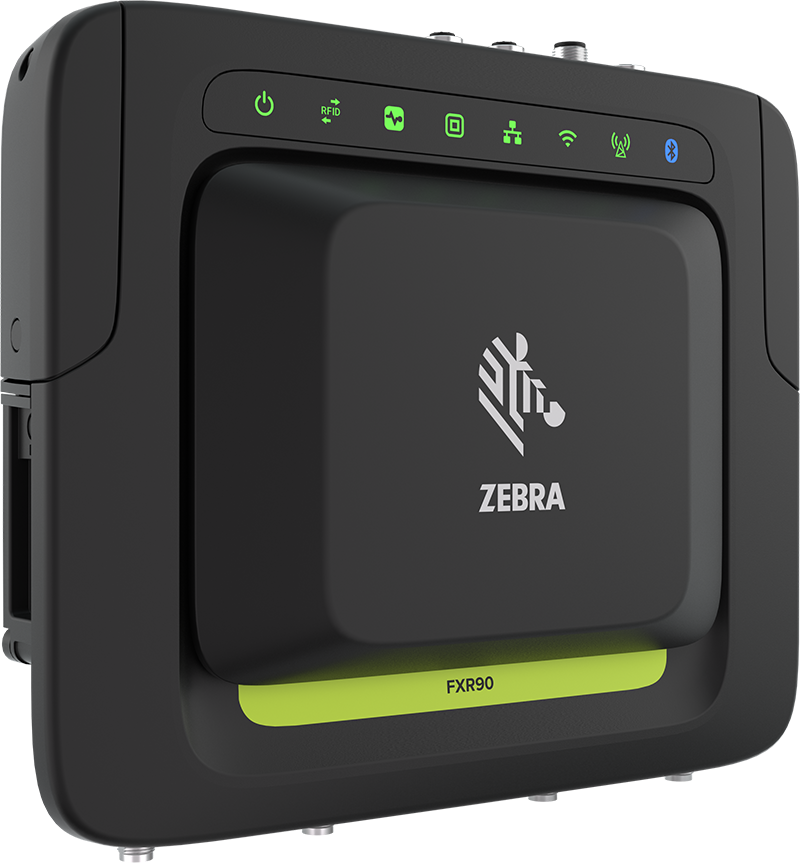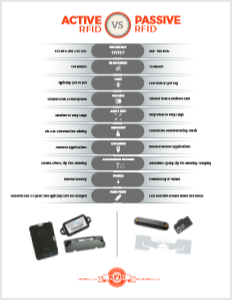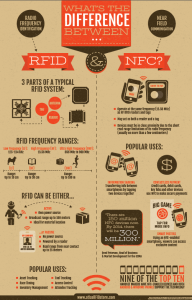RFID vs. UWB Technology - Pros, Cons, and When to Use Which Technology
In the realm of wireless communication and tracking systems, RFID and Ultra-Wide Band (UWB) technologies offer unique capabilities tailored to specific applications. RFID, or Radio-Frequency Identification, is widely known for its efficiency in inventory management and access control. Meanwhile, Ultra-Wide Band (UWB) provides high-precision location tracking, ideal for environments demanding accuracy. This article delves into the use cases, advantages, disadvantages, and costs of these technologies.
Don't forget to look at our infographic that highlights the main differences between RFID and UWB!
Understanding RFID Technology
Radio Frequency Identification (RFID) is a technology that utilizes electromagnetic fields to automatically identify and track tags attached to objects. These tags contain electronically-stored information which can be read using an RFID reader without requiring any direct line of sight. Typically, RFID systems are comprised of two or three main components: tags (or transponders), an RFID reader (or interrogator), and an RFID antenna (reader dependent). The tags can either be active, containing their own power source, or passive, which rely on the reader's electromagnetic field for power. In this article, we will focus solely on Passive RFID technology – particularly UHF RFID.
Common Use Cases for RFID
RFID technology has a wide variety of applications across several industries:
- Retail: Inventory management is a major use, allowing businesses to track items throughout their supply chains. RFID tags enhance stock visibility and accuracy, reducing incidents of out-of-stock and overstock incidents.
- Transportation and Logistics: RFID aids in the tracking of packages and cargo, enabling real-time updates when tagged items are read and attributed to shipment locations. This helps streamline operations and boost efficiency in the delivery processes.
- Healthcare: In healthcare settings, RFID is used to track medical equipment, ensure the safety of pharmaceuticals, and to track surgical tools and disposables.
- Access Control: Many organizations use RFID for secure access to buildings. RFID-enabled cards or key fobs replace traditional keys, providing a reliable method of controlling and monitoring entry.
Pros and Cons of RFID Technology
Pros:
- No line-of-sight needed: RFID tags do not require optical line-of-sight with the reader, making them useful in diverse setups where viewing may be obstructed.
- Fast and accurate tracking: The technology allows for quick scanning of multiple items simultaneously, ensuring efficient inventory management and minimizing human error.
- Long read range: Depending on the type of RFID tag, the read range can extend from a few centimeters to over 100 meters, accommodating varied operational needs.
Cons:
- Cost: Although passive RFID tags and systems are reasonably inexpensive, active tags and custom, comprehensive RFID systems can be costly.
- Interference issues: RFID systems may experience interference from metal objects, liquid, or other radio signals, affecting performance.
RFID vs. UWB Infographic
Take a look at the main differences between these two tracking technologies!
View NowUnderstanding Ultra-Wide Band Technology
UWB is adept at supporting high data rates, along with accurate location and tracking capabilities, all while facing minimal interference from other radio signals. This makes UWB suitable for both precise indoor positioning systems and high-speed wireless communication.
Common Use Cases for UWB Technology
UWB technology finds utility in several key areas:
- Indoor Positioning: Offering centimeter-level accuracy, UWB is ideal for indoor real-time location systems (RTLS) used in warehouses, factories, and offices. This facilitates efficient asset tracking, employee safety monitoring, and navigation.
- Consumer Electronics: Modern smartphones and wearable devices are integrating UWB to facilitate functionalities such as secure device-to-device communication, improved file sharing, device location sharing, and enhanced user experiences in smart home settings.
- Automotive Industry: UWB is being employed in advanced vehicle access systems. It enables precise and secure keyless entry by detecting the proximity and location of a car key.
Pros and Cons of UWB Technology
Pros:
- Precise Localization: UWB's capability for accurate location tracking, reaching precision levels to the scale of centimeters, is a strong advantage for applications requiring fine granularity.
- Interference Resistance: The wide frequency range utilized by UWB minimizes interference with other wireless technologies, promoting stable communication.
- Low Power Consumption: UWB operates with reduced power levels, extending battery life in compatible devices and fostering energy-efficient applications.
Cons:
- Limited Range: UWB's high precision is balanced by a shorter operational range, often not exceeding 20 meters.
- Complex Infrastructure: Deploying UWB systems may require more complex infrastructure, including multiple antennas and precise calibration, which can drive up initial costs and complexity.
- Cost: The expense of implementing UWB technology, including devices and infrastructure, can be prohibitive for some organizations, especially when considering ongoing maintenance and updates.
Cost Comparison: RFID vs. Ultra-Wide Band Technology
The cost implications of technology adoption are a critical consideration for businesses. In this section we will discuss the costs associated with the initial setup, ongoing maintenance, and how different use cases affect cost efficiency for each technology.
Initial Setup and Installation Costs
Radio Frequency Identification (RFID) Technology:
- Equipment Costs: RFID systems require tags, readers, and software. Passive RFID tags are relatively inexpensive, typically costing $0.50 to $1.00 per tag. A basic RFID system’s hardware costs could be as low as $1,000 or as high as $6,000 depending on the specific RFID reader and antenna chosen.
- Installation: Setting up the RFID system involves placing antennas and readers at strategic locations. The installation can be straightforward but might require a custom software and equipment setup, impacting overall costs.
Ultra-Wide Band (UWB) Technology:
- Equipment Costs: UWB systems necessitate tags and anchors. UWB tags are usually more expensive, ranging from $25 to $75 per tag. This cost is due to their complex technology, providing high accuracy and precision. UWB systems also use hardware like controllers, and specialized software.
- Installation: UWB systems are more complex to install due to the need for precise placement of infrastructure to enable exact location tracking. This might involve substantial upfront costs, especially in large installations.
Long-Term Maintenance Costs
Radio Frequency Identification (RFID) Technology:
- Maintenance: RFID maintenance is relatively low-cost. Because passive UHF RFID tags do not have a battery, they do not need to be replaced if they are attached to reusable assets. For RFID applications tracking inventory, low-cost, disposable RFID tags can be as low as $0.05 per tag in bulk.
- Support: Over time, software updates and occasional reader repairs contribute to the overall maintenance budget. Purchasing a maintenance/support contract on an RFID reader could take care of all associated support and maintenance costs.
Ultra-Wide Band (UWB) Technology:
- Maintenance: UWB systems generally have higher maintenance costs. The sophisticated hardware components, battery life, and the need for periodic recalibration contribute to these expenses.
- Support: Like RFID, UWB systems require software support and updates. If precise tracking capabilities degrade, prompt calibration and technical adjustments may be necessary.
Conclusion
In conclusion, the choice between RFID and Ultra-Wide Band (UWB) technology hinges on specific use cases and industry requirements. RFID stands out in applications demanding cost-efficiency and simplicity, such as in retail and logistics for inventory tracking and access control. Its limitations include a shorter range and potential interference issues.
On the other hand, UWB offers unparalleled precision in location-tracking environments, ideal for healthcare and manufacturing industries where real-time, accurate positioning is critical. The technology's higher cost and complexity are counterbalanced by its superior accuracy and reliability.
Ultimately, businesses must weigh their functional needs against budgetary constraints to make an informed decision between these two technologies. Don't forget to download the RFID vs UWB Infographic!






